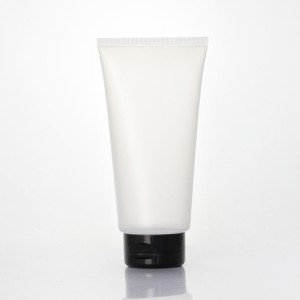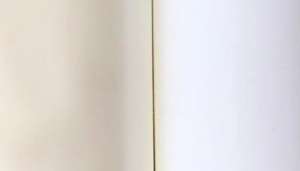Tube is an important part of the daily necessities packaging, widely used in hand cream, facial cleansing , sunscreen and other product areas. Traditional tube surface coating is solvent-based two-component polyurethane coatings. Although two-component polyurethane coating has excellent performance on flexibility, secondary printing (hot stamping) and other aspects, but its VOCs content is up to 80% or more which limits its application, especially in recent years, with the worldwide growing awareness of environmental protection, the production and use of high VOCs content coatings are subject to strict regulation, the use of environmentally friendly tube coatings in the tube coating process to replace the traditional high VOCs content of coatings has reached consensus.
At present, the recognized environmentally friendly coatings are: 1. water-based coatings with less than 10% VOCs; 2. high-solids coatings with solids content higher than 85% or even full-solids coatings. As the current tube base material is mainly polyethylene (PE) material, the low surface tension and low polarity of this material make water-based coatings in tube coating have no precedent mature applications . High solids UV-curable coatings (UV-curable coatings) with its high efficiency, energy saving, environmental protection peformance, has become the first choice of environmentally friendly coatings for tubes. However, due to the characteristics of UV-curable coatings themselves, in the process of using UV-curable coatings for tube packaging materials, it is common to encounter problems such as poor light aging resistance of the coating, easy yellowing, cracking of the coating, poor matte wear resistance, not easy to secondary printing (hot stamping), and unfriendly odor of the product after coating.
In this article, we will start from the basic principle of UV curing coating, combined with the actual application, and discuss the main problems in depth for the process of coating and secondary decoration of the tube packaging materials used in daily-use tubes, and give specific solutions to these problems based on the optimization of coating formulations and according to the specific actual situation of package material manufacturers.
UV curing coating introduction
Light curing is a rapidly developing green new technology, from the 1970s to the present, light curing technology has been widely used in coatings, inks, crosslinkers and medical fields. UV coatings are mainly composed of photoinitiators, unsaturated resins and monomers, surface control additives and the necessary fillers. In the field of daily necessities packaging material surface decoration, UV curing technology is widely used in painting, printing and other fields. In the daily necessities tube packaging material coating, UV curing coating with its fast curing, high surface gloss, excellent scratch resistance, high solid content, as a new environmentally friendly coating materials, in recent years has attracted more and more attention.
However, like any other materials, UV cured coatings in the process of use will also exist such as yellowing, cracking, matte wear resistance and other problems, this paper will focus on the application of the tube UV coatings common problems discussed, from the causes of the problem, from the coating formula design to the coating construction process to solve these problems of the method.
The main problems and solutions of UV curing coating in the application of daily necessities tube packaging materials
I. The causes of yellowing and solutions
UV curing coating yellowing is mainly due to the coating contains molecular structures that can absorb specific wavelengths of ultraviolet light, these substances absorb specific wavelengths of ultraviolet light, resulting in energy level jump, and eventually cause the oxidation of the coating. When the degree of oxidation is not high, the appearance will show yellowing, commonly known as “yellowing”.
(left – yellowing phenomenon, right – normal)
The main components of UV coating that can absorb UV light are:
1 Photoinitiator residue (this is the most important substance that causes yellowing)
2 Molecular structure containing UV activity (UV coating in this part is mainly UV resin or monomer containing benzene ring structure of substances)
3 Residual unsaturated bonds that have not been cured, and other easily oxidized substances (such as amines, etc.)
Solution of yellowing.
Coating formula design: use high activity initiation system, reduce the amount of initiator used.
Increase the content of multifunctional components in the system, with appropriate plasticizing components, in order to achieve rapid curing and reduce the content of photoinitiator.
Do not use components containing benzene ring structure, such as epoxy acrylic resin, and monomers with benzene ring structure and photoinitiator.
Do not use active ammonia as an antioxidant.
Second, the coating process control: in the coating process, appropriate to reduce the thickness of the coating, and increase the temperature when curing, and UV curing energy is beneficial to reduce the yellowing of the coating.
II. The causes and solutions of coating cracking
The main reasons for coating bending and cracking: 1. poor adhesion of the coating to the substrate; 2. low elongation at break after curing of the coating, which in common parlance means bad toughness of the coating.
The solution of coating cracking.
One, from the formulation design, to provide better adhesion and toughness of the coating.
Second, from the coating process control, the specific methods are: 1. substrate pretreatment, such as flame, corona and other treatment of the substrate or pre-coating treatment agent pretreatment, increase the surface polarity of the substrate, improve the interlayer adhesion of the substrate with the coating; 2. in the coating process, appropriate to reduce the thickness of the coating, and improve the curing temperature, and UV curing energy.
III. Causes and solutions of unfriendly odor
After the coating of the tube, with the placement of the product, especially the product closed in the bag for a long time, in the moment of opening the bag, you will smell the pungent odor. The main reason for these pungent odors is the residual in the paint film of low boiling point small molecule compounds, with time migrate to the surface of the coating, and volatilize into the air, and the accumulation of closed environment. The sources of these low boiling point small molecule compounds are mainly residual solvents (solvents that have not fully evaporated), residual small molecule monomers (incomplete curing) and photoinitiators and their cleavage resulting in small molecule compounds (commonly known as initiator residues).
Methods to solve the odor after curing.
First, from the formulation design, the use of high activity initiator system, reduce the amount of initiator used; improve the content of multifunctional components in the system, with appropriate plasticizing components, reduce the use of small molecules monomer, especially monofunctional small molecules monomer.
Second, from the coating process control, appropriate to reduce the coating thickness, and improve the curing temperature, and UV curing energy can reduce the generation of unfriendly odor.
IV. Causes and solutions of poor scratch resistance of matte tube
The reason for the poor scratch resistance of matte coating is that the matte effect of the coating is mainly produced by the diffuse reflection of light from the coating surface, and the diffuse reflection of the coating surface is mainly produced by the roughness of the coating surface and the insolubility of the coating itself. The roughness of the surface brings about greater friction when friction occurs, resulting in a coating that is more prone to scratching compared to a high-gloss surface. In addition, the powder substance in matte coatings will destroy the integrity of the coating surface to some extent, which is one of the reasons why matte coatings are more prone to scratching compared to glossy coatings.
(Matte tube is easy to be scratched and whitened by friction)
Scratching solutions.
First, from the dispensing design, use part of the matte resin to replace the powder component in the coating, which can reduce the roughness of the surface layer of the coating and improve the color base ratio of the coating under the premise of ensuring the matte coating, and finally achieve the improvement of the surface scratch resistance of the matte coating. Second, from the control of the coating process, appropriately reduce the thickness of the coating, and improve the temperature of curing, and UV curing energy can improve the matte coating surface scratch resistance.
V. The causes of poor stamping and solutions
The reason for poor stamping is mainly: one, the coating with the stamping paper does not match, resulting in incomplete stamping or poor adhesion; two, stamping process control is not stable.
(unstable hot-stamping )
The solution to unstable stamping
One, from the formulation point of view, the unhealthy chemically creative in the formulation of the introduction of temperature-sensitive substances, such substances at room temperature with high hardness and low surface tension, but when the temperature reaches or exceeds its phase transition temperature, such substances undergo a phase transition, the hardness sharply reduced, and accompanied by increased surface tension. In the process of stamping, because the local temperature of stamping quickly rises above the phase transition temperature of the substance, greatly reduces the hardness of the stamping part and increases the surface tension, thus improving the adhesion of the stamping paper to the coating and the integrity of the stamping. When the stamping process is completed, the temperature drops to below the phase transition temperature, and the coating hardness recovers.
Second, from the process control, priority selection with the coating matching hot stamping paper and process, and appropriate to improve the hot stamping temperature and hot stamping when the pressure force, conducive to improving the integrity of hot stamping and adhesion. UV type PE tube varnish will slowly replace the two-component polyurethane coating, is the national safety production, clean production, reduce carbon emissions, environmental protection requirements, some problems in the UV varnish construction process, can be adjusted through the varnish manufacturer’s formula, equipment manufacturers and tube factory process adjustment to jointly solve.
Learn more about Uzone Group Cosmtic Tube Products
Post time: Nov-25-2022

